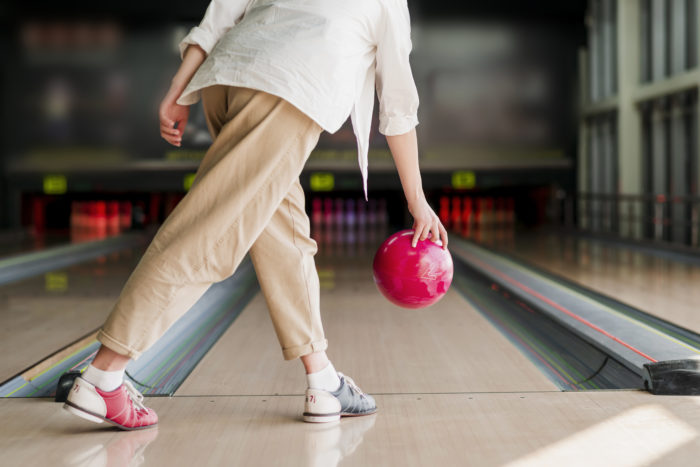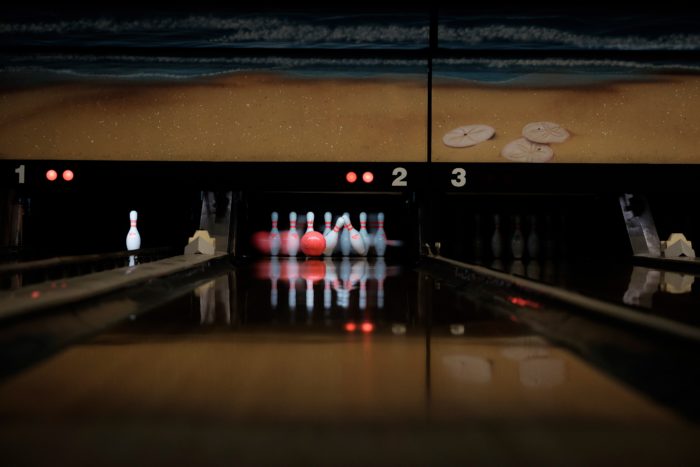Bowling is a sport that requires precision and technique.
As a bowler, you need to be able to adapt to different lane conditions in order to perform your best.
One common challenge bowlers face is dry lanes, which can significantly impact your game.
In this article, we’ll explore how to identify dry lanes, adjust your technique, reduce the hook on your ball, and avoid common mistakes.
Whether you’re a seasoned pro or a beginner, these tips will help you bowl your best on dry lanes.
How Do You Know if Your Bowling Lane is Dry?
To identify a dry bowling lane, watch for signs like the ball pulling left, feeling a rough surface, and hearing a scraping sound. These indicate a lack of oil, causing the ball to lose spin and hook motion, and travel too straight. Knowing these signs will help you adjust your technique and improve your game.

How Do You Bowl On Dry Lanes?
Adjust Your Ball Speed
On a dry lane, your ball will not hook as much as it would on an oily lane; therefore, you should adjust your ball speed by throwing it slightly faster.
A higher ball speed will allow the ball to cover more distance before it begins to hook.
Change Your Target Position
Moving your target position slightly to the left can help you hit the pocket and increase your chances of getting strikes on dry lanes.
You can move your target position with your eyes while keeping your feet in the same place.
Use a Polished Ball
Another way to help you bowl on dry lanes is to use a polished ball.
A polished ball will counteract the dry lane and allow you to bowl with your preferred hook motion.
Adjust Your Hand Movement
You might want to experiment with less or no finger rotation when releasing the ball on dry lanes.
This will help the ball travel straighter and reduce the chances of it hooking too early.
Move Your Feet
A good technique is to move your feet two boards on the lane in the same direction as the dry area.
This will help you find more oil on the lane and achieve a better angle to the pocket.

How to Reduce the Hook On a Bowling Ball?
Keep Your Wrist Straight
When releasing the ball, keeping your wrist straight will prevent excessive rotation of the ball and minimize the hook motion.
Tilt the Wrist Back Slightly
Tilting your wrist back slightly before releasing the ball can maintain a straighter release, which will help to reduce the hook.
Use a Wrist Support Device
A wrist support device can help stabilize your wrist, preventing it from tilting too much and causing the ball to hook excessively.
Decrease Finger Rotation
Reducing the amount of finger rotation during your release can reduce the hook motion of the ball. Instead of rotating your fingers around the ball, try keeping them more still and focusing on rolling the ball off your hand.
Increase Ball Speed
Increasing your ball speed can also reduce the hook on your ball. When you throw the ball faster, it will not have as much time to hook and will travel more in a straight line toward the pins.
What Are Some Common Mistakes to Avoid When Bowling On Dry Lanes?
Starting In the Wrong Spot
If you start your approach in the wrong spot, you could end up throwing the ball directly into the dry area of the lane. Generally, you should start a few boards to the left of where you would normally start on an oily lane.
Using Too Many Hooks
On a dry lane, using too much hook can cause you to lose control of the ball and miss your target. You should focus on keeping your ball straighter and minimizing the amount of hook you use.
Not Adjusting Your Ball Speed
If you don’t adjust your ball speed to account for the dry lane conditions, you could end up leaving a lot of spares or missing your target entirely. A faster ball speed can help counteract the lack of oil on the lane.
Using the Wrong Ball
If you’re using the wrong ball for the dry lane conditions, you could end up with poor results. Generally, you should use a ball that is designed for dry lanes, such as a polished ball.
Not Making Adjustments
As the lane conditions change, you need to be prepared to make adjustments to your approach. If you’re not making the necessary adjustments, you could end up struggling to hit your target and score points.

Frequently Asked Questions
What is the best ball to use on dry lanes?
Urethane bowling balls are best for dry lanes due to their smooth surface and low friction.
The top 10 options include the Storm Parallax, 900 Global Zen, Storm Proton Physix, Motiv Allegiant Sniper, and Roto Grip Rubicon UC2.
Other options are Brunswick Tzone Deep Space and Pyramid Path Rising. Bowler preferences and skill levels determine the best choice.
How do you adjust your feet on dry lanes?
To bowl effectively on dry lanes, adjust your feet’ positioning to hit your target accurately and consistently.
Moving two boards in the direction of your target can help, as can starting your approach from a different spot in the approach area.
Experiment with these techniques to find what works best for you.
What is the ideal launch angle for bowling on dry lanes?
The ideal launch angle for bowling on dry lanes is typically between 12-16 degrees, allowing for enough speed and control.
However, it can vary based on the bowler’s style, ball choice, and lane conditions.
The aim is to help the ball skid before hooking toward the pocket, retaining energy and speed.
Practice and experimentation with a coach can help determine the best angle.
Should you increase or decrease your ball speed on dry lanes?
On dry bowling lanes, increasing ball speed is recommended to reduce aggressive hooking and maintain momentum.
It’s crucial to focus on a smooth, controlled release for gradual speed gain without compromising accuracy.
Experimenting with techniques during practice and seeking expert guidance can enhance performance.
Conclusion
Bowling on dry lanes can be a challenging experience, but with the right technique and equipment, you can still achieve great results.
By identifying the signs of dry lanes, adjusting your ball speed and technique, and using the right ball, you can improve your game and increase your chances of success.
Remember to practice regularly and seek guidance from experienced bowlers or coaches to fine-tune your skills.
With these tips in mind, you’ll be well-equipped to conquer even the driest of bowling lanes.

